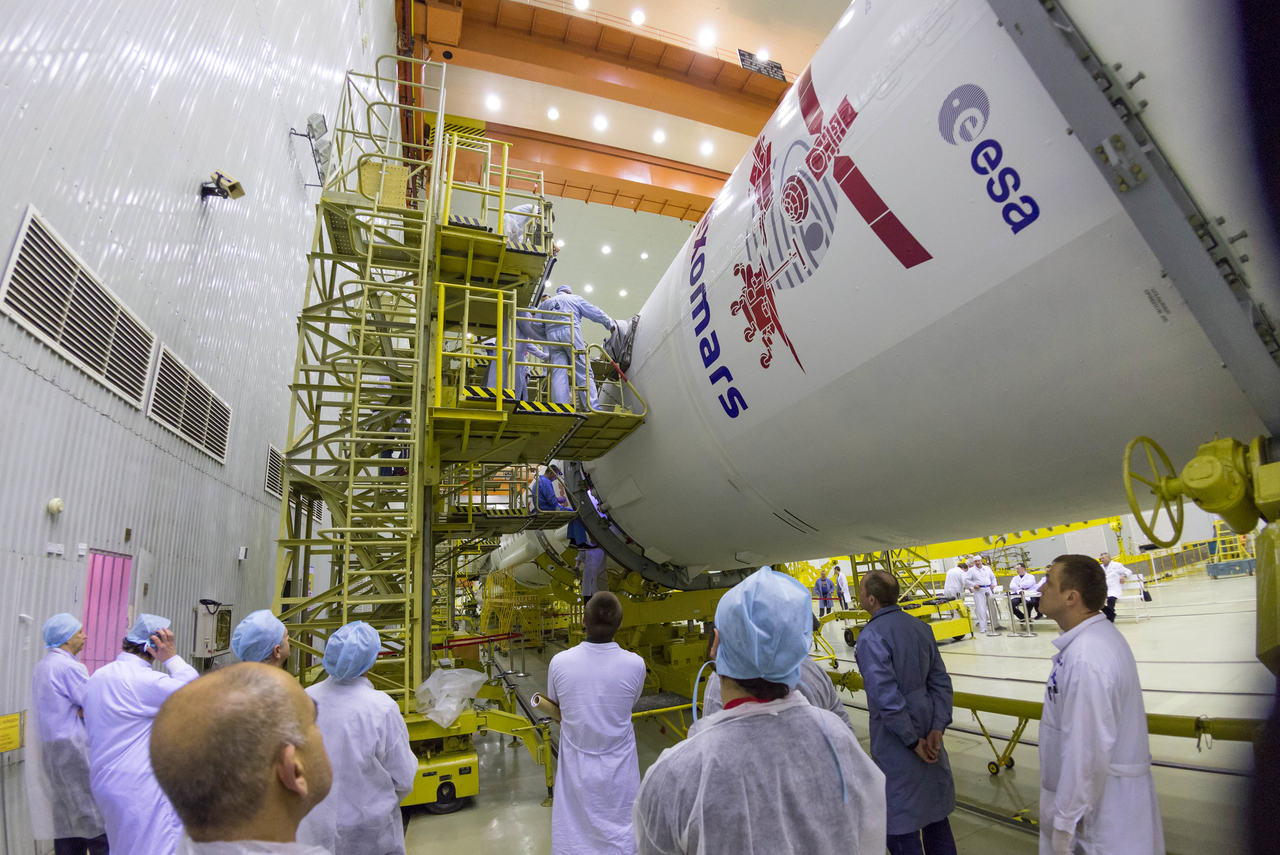Preparations for the joint Russian-European ExoMars 2016 mission are in their final stages. Lift-off of the Proton launch vehicle is scheduled for 14th March, at 09 :31 UTC.
On 5th March, the ExoMars Trace Gas Orbiter and the entry, descent and landing demonstrator module, known as Schiaparelli — already integrated with the Breeze-M upper stage — were transported by train to the area of the Baikonur cosmosdrome where they were mated with the Proton launch vehicle that will carry them on the first part of their journey to Mars.
The first mission of the ExoMars programme, scheduled to arrive at Mars in 2016, consists of a Trace Gas Orbiter plus an entry, descent and landing demonstrator module, known as Schiaparelli. The main objectives of this mission are to search for evidence of methane and other trace atmospheric gases that could be signatures of active biological or geological processes and to test key technologies in preparation for ESA's contribution to subsequent missions to Mars.
The Orbiter and Schiaparelli will be launched together in March 2016 on a Proton rocket and will fly to Mars in a composite configuration. By taking advantage of the positioning of Earth and Mars the cruise phase can be limited to about 7 months, with the pair arriving at Mars in October.
Three days before reaching the atmosphere of Mars, Schiaparelli will be ejected from the Orbiter towards the Red Planet. Schiaparelli will then coast towards its destination, enter the Martian atmosphere at 21,000km/h, decelerate using aerobraking and a parachute, and then brake with the aid of a thruster system before landing on the surface of the planet.
From its coasting to Mars till its landing, Schiaparelli will communicate with the Orbiter. Once on the surface, the communications of Schiaparelli will be supported from Mars Express and from a NASA Relay Orbiter. The ExoMars Orbiter will be inserted into an elliptical orbit around Mars and then sweep through the atmosphere to finally settle into a circular, approximately 400km altitude orbit ready to conduct its scientific mission.
The Orbiter spacecraft is designed by ESA, while Roscosmos provides the launch vehicle. A scientific payload with instruments from Russia and Europe will be accommodated on the Orbiter to achieve its scientific objectives. The Orbiter will perform detailed, remote observations of the Martian atmosphere, searching for evidence of gases of possible biological importance, such as methane and its degradation products.
The instruments onboard the Orbiter will carry out a variety of measurements to investigate the location and nature of sources that produce these gases. The scientific mission is expected to begin in December 2017 and will run for five years. The Trace Gas Orbiter will also be used to relay data for the 2018 rover mission of the ExoMars programme and until the end of 2022.

